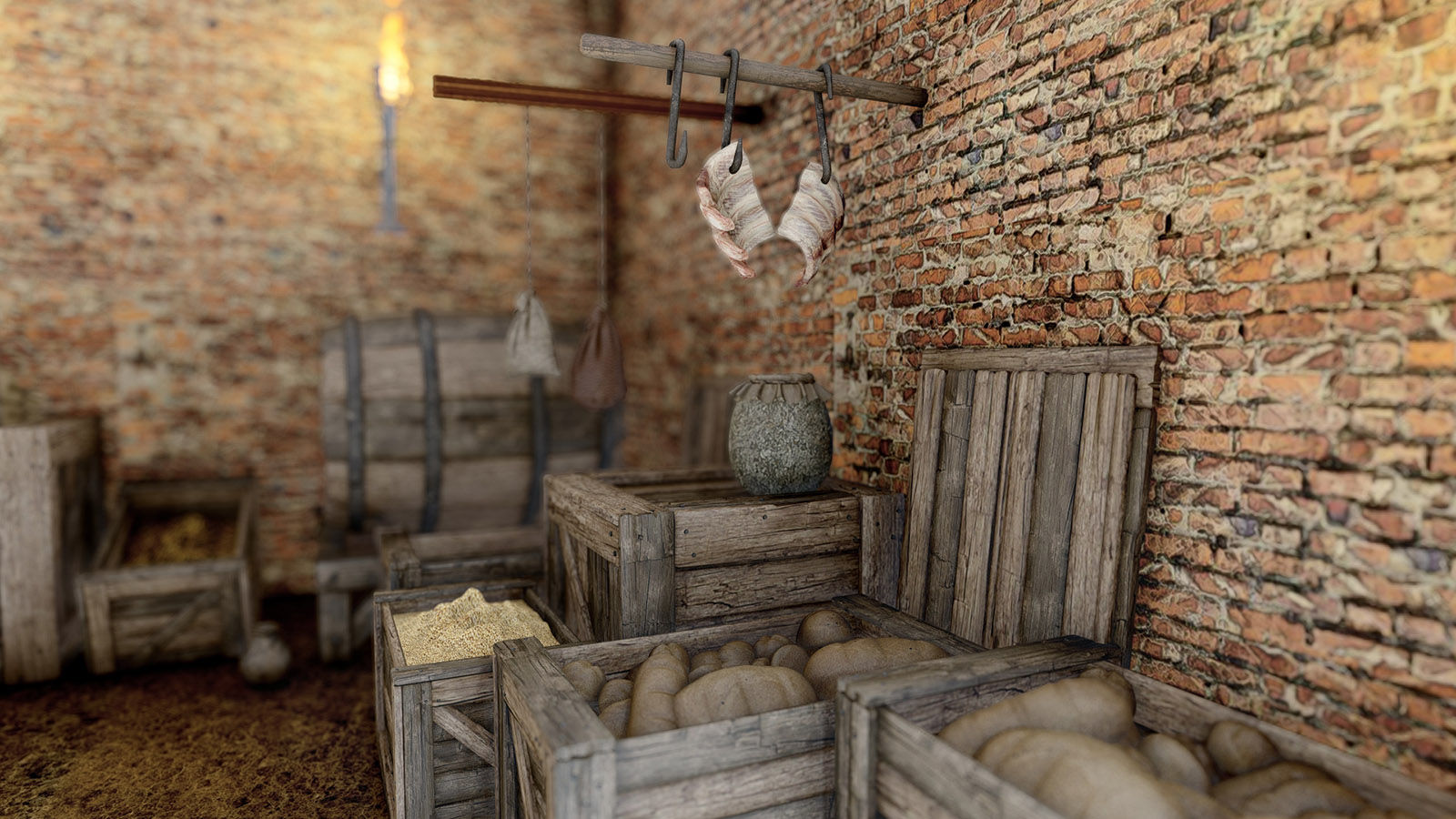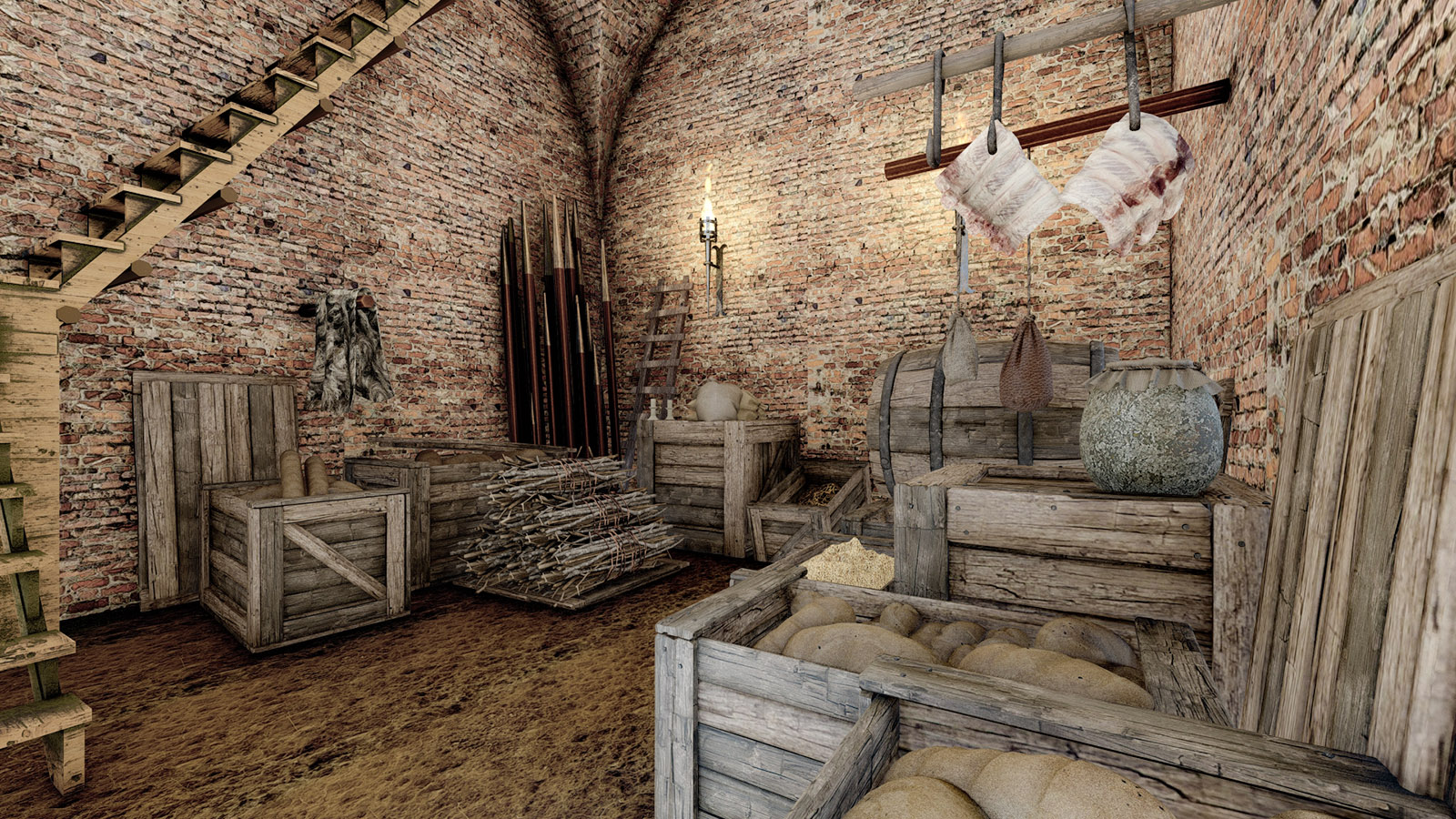
PARCO CORSINI
LA TORRE GROSSA / THE MAIN TOWER
Questo edificio, che sfrutta i resti della torre-palazzo in pietra del castello di Salamarzana dei conti Cadolingi, era il più imponente delle mura superiori ed era articolato in almeno tre piani, di cui quello intermedio era direttamente collegato con il cammino di ronda sulle mura. Per questa ragione è probabile che avesse la funzione di alloggio della guarnigione addetta a presidiare il ridotto superiore. Quando la Rocca fu trasformata in fattoria, a partire dal 1400, fu aperta la porta bassa sul lato occidentale per il nuovo uso civile.
This building, which utilises the remains of the stone tower-palace of the Salamarzana castle of the Cadolingi counts, was the most imposing of the upper walls and had at least three storeys, of which the middle one was directly connected to the wall walkway. For this reason, it probably served as accommodation for the garrison guarding the upper redoubt. When the fortress was converted into a farm, starting in 1400, the lower gate on the western side was opened for the new civil use.
LA TORRE DI MEZZO / THE MIDDLE TOWER




La torre, che si trova nel punto più interno ed elevato della fortificazione, aveva la funzione di magazzino di derrate alimentari e attrezzature varie della guarnigione, mentre la sommità serviva come punto di ricezione e trasmissione di segnali visivi con i vicini castelli del Valdarno e del Montalbano, di giorno tramite fumo e di notte con fuochi.
The tower, located at the innermost and highest point of the fortification, served as a storehouse for foodstuffs and various equipment of the garrison, while the top served as a point of reception and transmission of visual signals with the nearby castles of Valdarno and Montalbano, by day through smoke and by night through fires.
LA TORRE PAGLIAIOLA / THE TOWER OF THE STRAW
Questa piccola torre, posta lungo le mura superiori e collegata con il cammino di ronda, era aperta sul lato interno e svolgeva la funzione di controllo dell’accesso più esterno della rocca, o Porta del Soccorso. Quando nel 1400 la Rocca fu trasformata in fattoria fu popolarmente detta “Pagliaiola”, forse perchè utilizzata per stipare la paglia per gli animali.
This small tower, located along the upper curtain walls and connected with the patrol path, was open on the inner side and served to control the outermost access to the fortress, or Porta del Soccorso. When the fortress was transformed into a farm in 1400, it was popularly known as ‘the Tower of the Straw’, perhaps because it was used to store straw for the animals.
LA PORTA DEL SOCCORSO / THE PORTA DEL SOCCORSO
La Porta del Soccorso, rivolta verso la strada proveniente da Firenze, l’attuale Via delle fornaci, era l’unico accesso alla fortezza. Come di norma, la sua struttura di almeno due piani, ha una pianta aperta verso l’interno della fortificazione, in modo da poter essere facilmente controllata per evitare che, una volta conquistata, potesse essere usata come punto di attacco verso l’intera rocca.
The Porta del Soccorso, facing the road coming from Florence, today’s Via delle fornaci, was the only access to the fortress. As was the norm, its structure of at least two storeys, was open towards the interior of the fortification, so that it could be easily controlled to prevent it being used as a point of attack towards the entire fortress once conquered.
LA FORNACE DELLA FATTORIA / THE FARM'S KILN
La Porta del Soccorso, rivolta verso la strada proveniente da Firenze, l’attuale Via delle fornaci, era l’unico accesso alla fortezza. Come di norma, la sua struttura di almeno due piani, ha una pianta aperta verso l’interno della fortificazione, in modo da poter essere facilmente controllata per evitare che, una volta conquistata, potesse essere usata come punto di attacco verso l’intera rocca.
The Porta del Soccorso, facing the road coming from Florence, today’s Via delle fornaci, was the only access to the fortress. As was the norm, its structure of at least two storeys, was open towards the interior of the fortification, so that it could be easily controlled to prevent it being used as a point of attack towards the entire fortress once conquered.